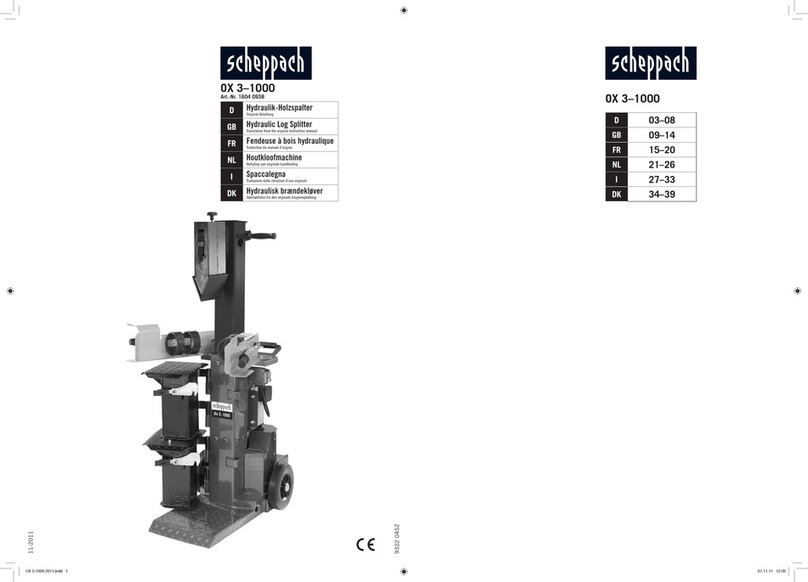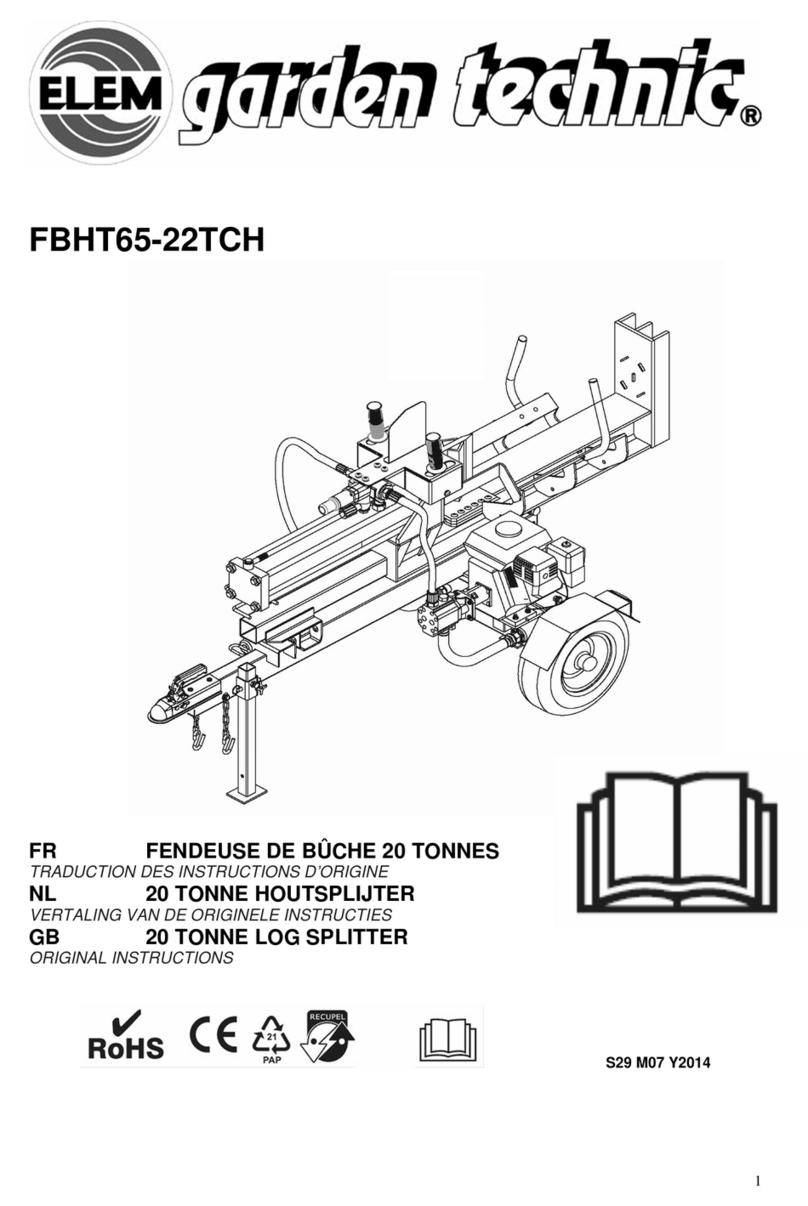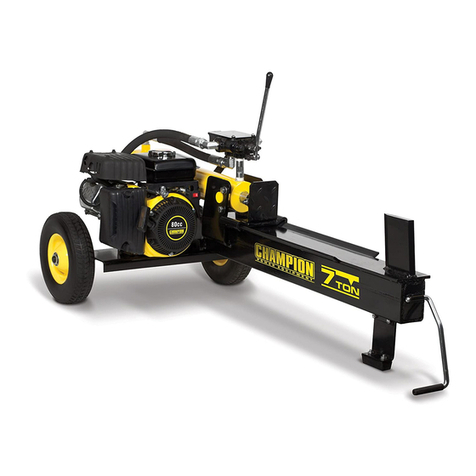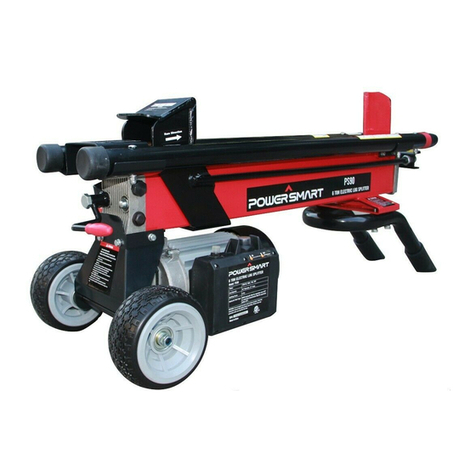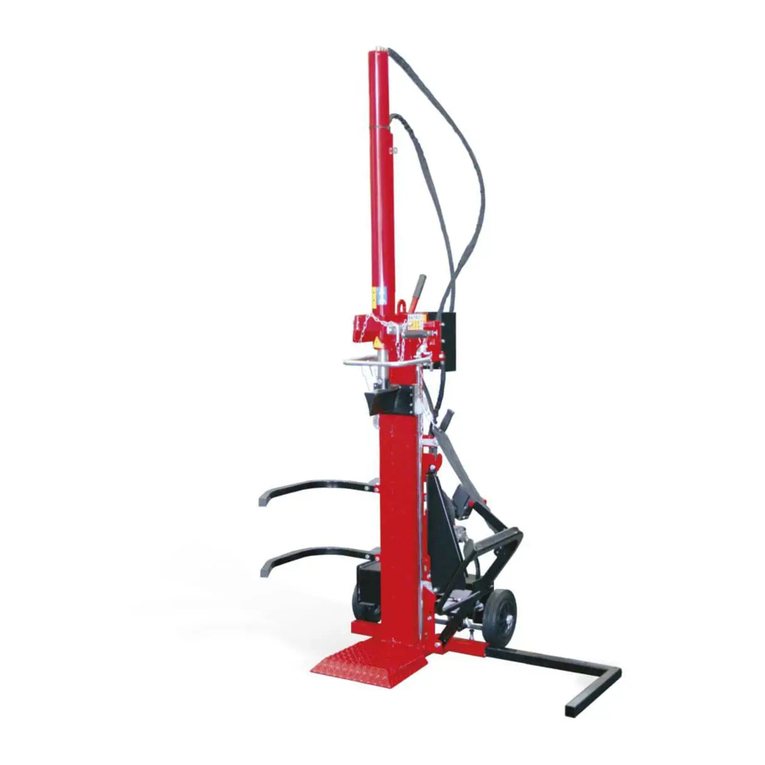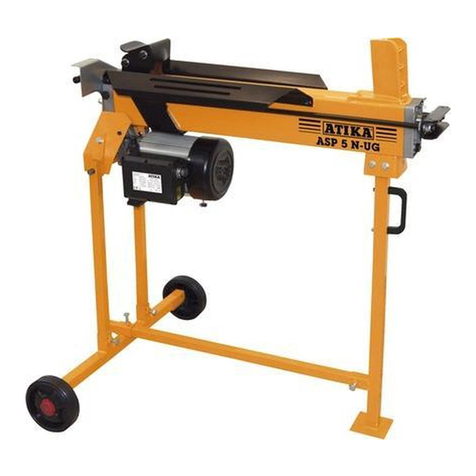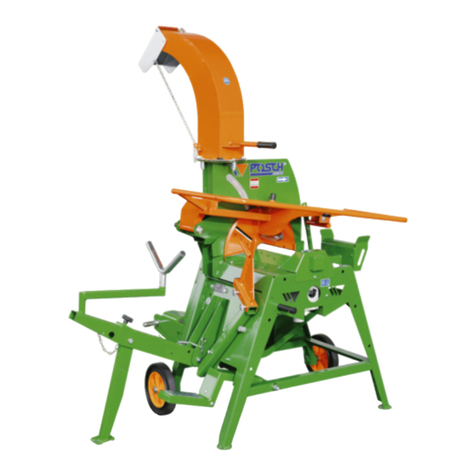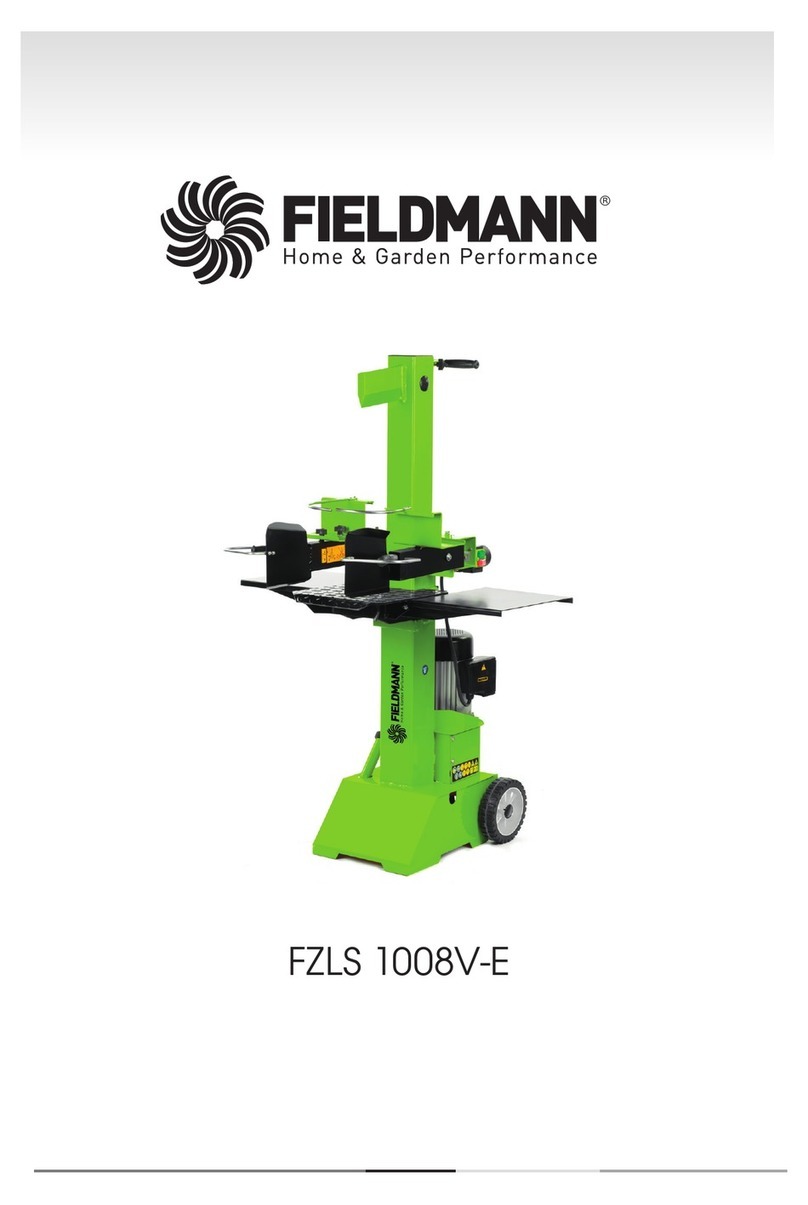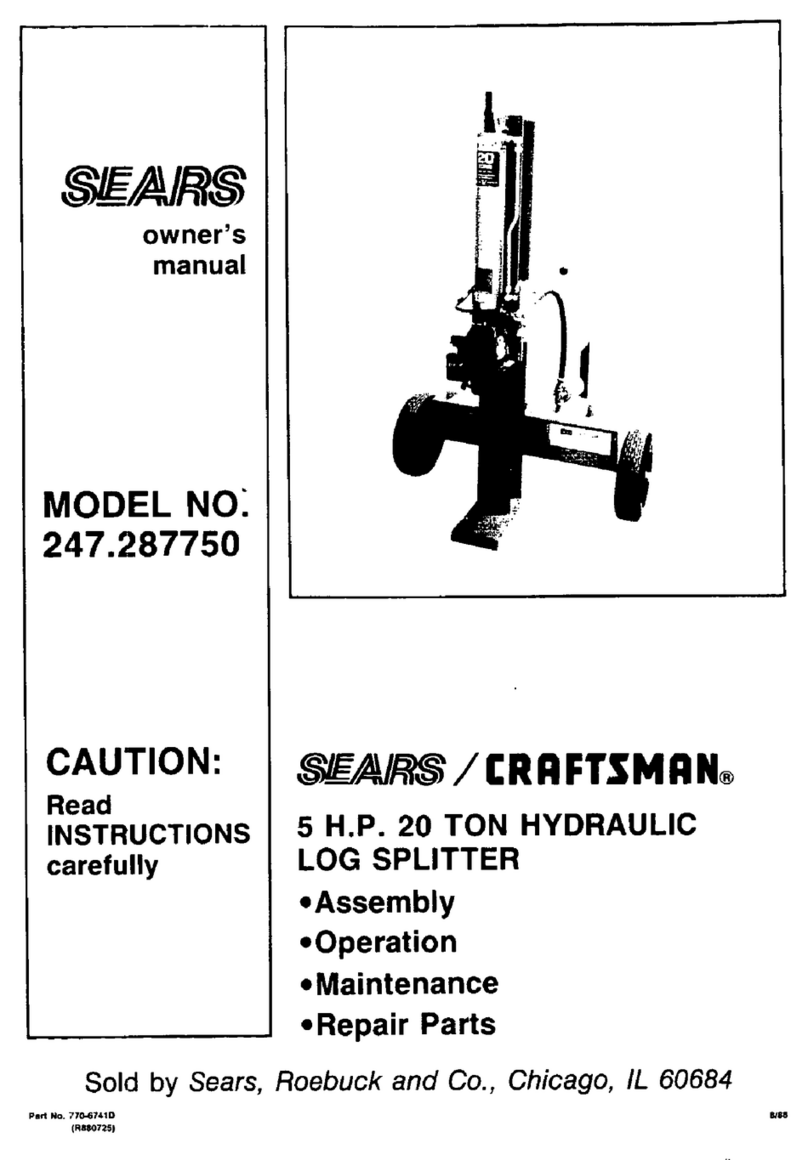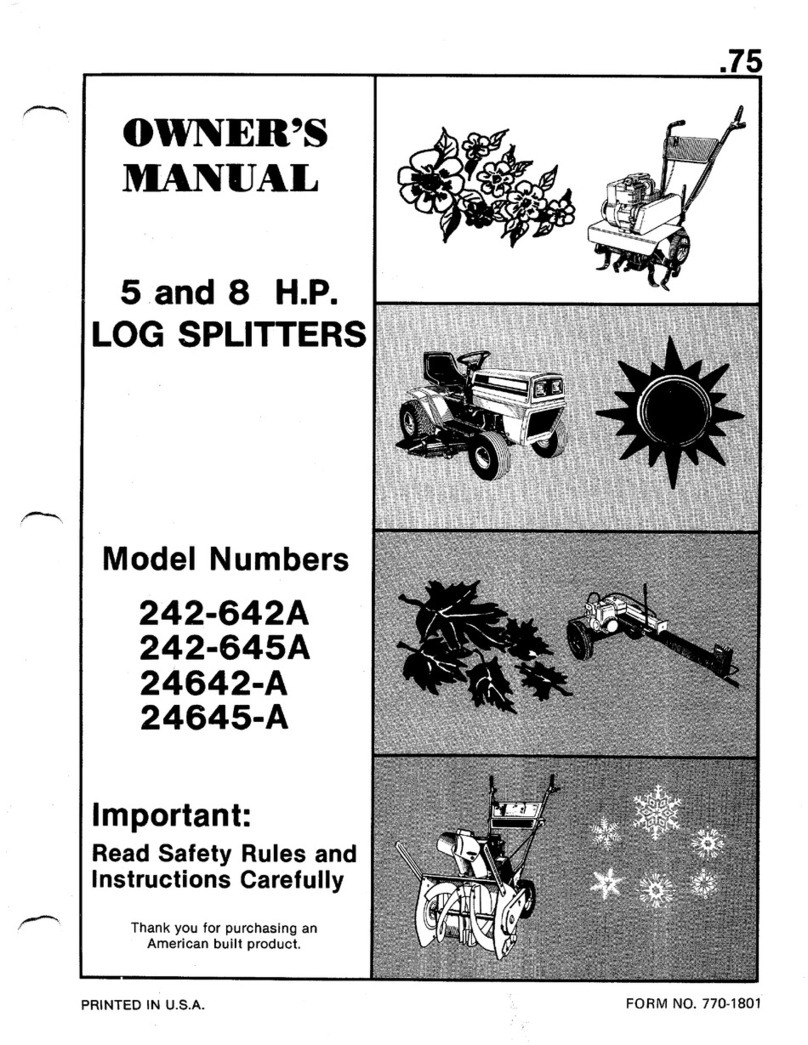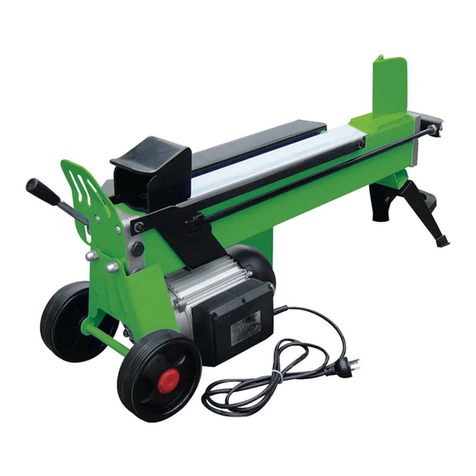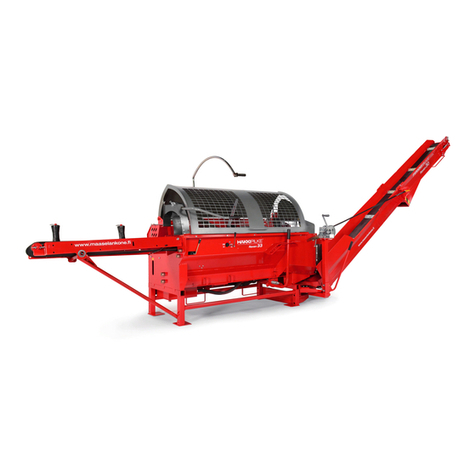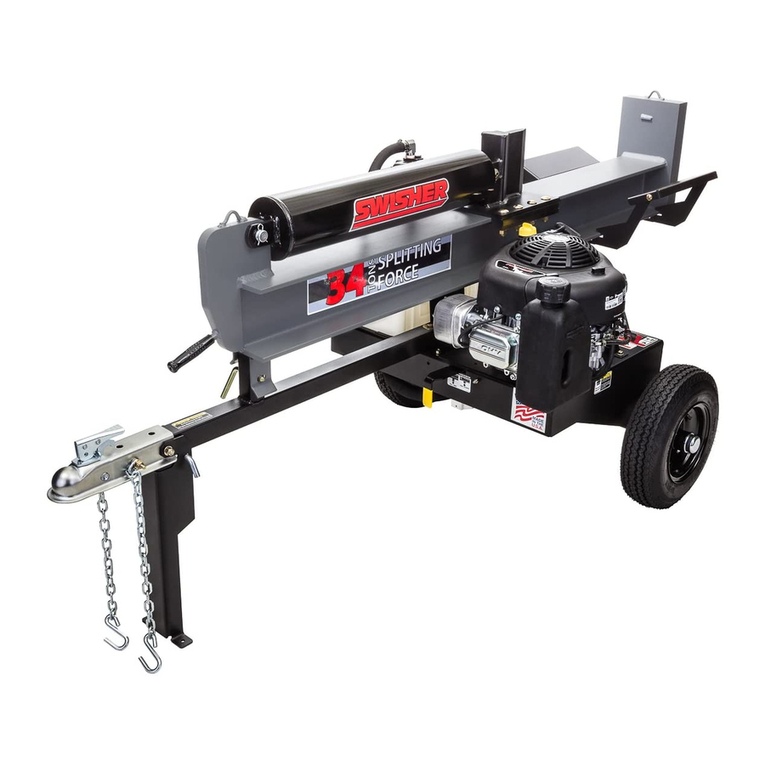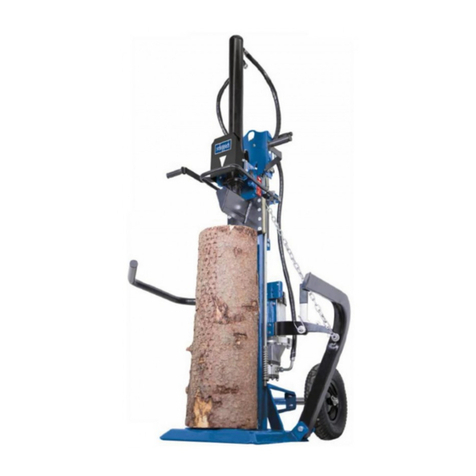
Only use log splitter for its intended purposes. Operate only on level surfaces. Allow engine to run for
several minutes before using the log splitter. Turn the engine switch to the “OFF” position when the
engine is not running.
SPECIFIC SAFETY RULES FOR LOG SPLITTER
SAFETY WHILE MOVING:
1. Horizontal position. Make sure the log splitter is secured in the horizontal position before moving the
log splitter. DO NOT move the log splitter when it is in the vertical position because it will be
unstable and could tip.
2. Turn engine off. Never move the log splitter with its engine running.
SAFETY DURING TOWING:
1. Securely attach the log splitter to the towing vehicle before towing.
2. Be sure the tires are fully inflated and in good condition before towing the log splitter. When adding
air to the tires, do not over-inflate, as this could result in serious injury if the tire explodes.
3. Never tow this log splitter over 45 mph. Faster speeds may result in loss of control.
4. Rough terrain: be extra cautious and drive slowly when traveling over rough terrain.
5. Stay sober: never tow this splitter while under the influence of alcohol, drugs, or medication.
6. If towing on a public road, make sure to comply with all local, state, and federal towing requirements.
It is the sole responsibility of the purchaser to obtain licensing, trailer lights, safety chains, signage, or
any other legal requirements needed in the area of towing.
7. Turn off the towing vehicle before leaving the splitter unattended.
8. Disconnect before operating. Do not use the log splitter while it is connected to the towing vehicle.
SAFETY DURING USE:
1. Always block the wheels to prevent unintended movement of the log splitter.
2. Safety equipment/controls: always operate the log splitter with all safety equipment in place and in
good working order, and all controls properly adjusted for safe operation.
3. Know how to stop: be thoroughly familiar with all controls and with the proper use of the equipment.
Know how to stop the log splitter and relieve system pressures quickly if needed.
4. Daylight only: Only use the log splitter in daylight so you can see what you are doing.
5. Smoking/sparks: never smoke while operating the log splitter, and never operate near sources of
sparks or flames.
6. Hot muffler: if you are starting a warm engine, stay clear of muffler. It may still be hot enough to burn
you.
7. Never leave the machine unattended while the engine is running.
8. Stay sober: never operate the log splitter while under the influence of alcohol, drugs, or medication.
9. Other exhaust dangers. Engine exhaust, some of its constituents, and certain vehicle components
contain or emit chemicals known to the State of California to cause cancer, birth defects, or other
reproductive harm. Avoid excess inhalation of exhaust.
10. Only uses square log ends: logs that are not cut square can slide out while splitting and become a
safety hazard or cause excessive force to log splitter components. Use a chainsaw to cut logs square
on each end before attempting to split them.
11. Single log: never attempt to split more than one log at a time. Pieces of log can unexpectedly be
thrown from the machine causing serious injury.
12. Split along grain: do not use the log splitter to split logs across the grain. Doingso will damage the log
splitter and can also cause pieces of log to be thrown, injuring the operator or bystanders.
13. Keep hands clear: ALWAYS keep hands and feet away from the endplate, wedge, and partially split
logs while loading, operating and unloading the log splitter.
